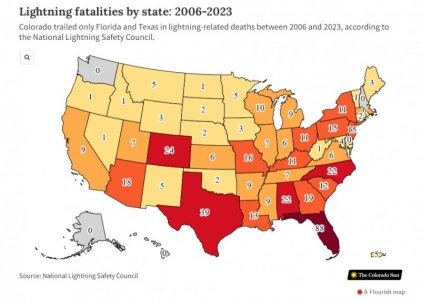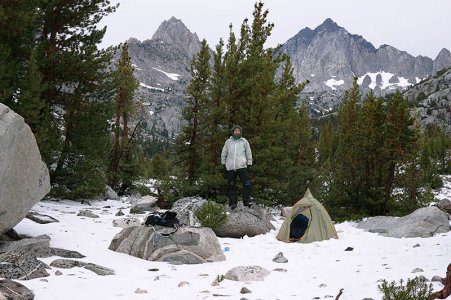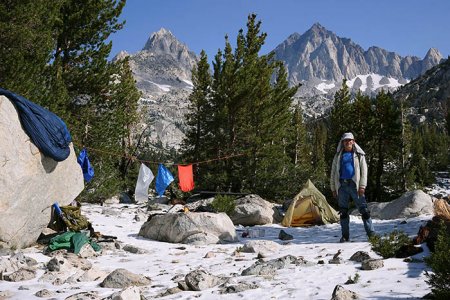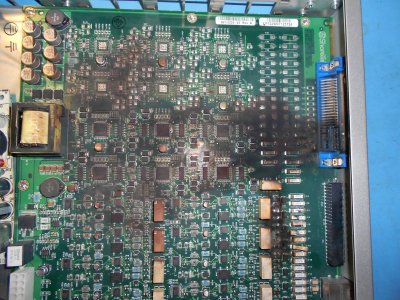David777
Well-known Member
- Location
- Silicon Valley
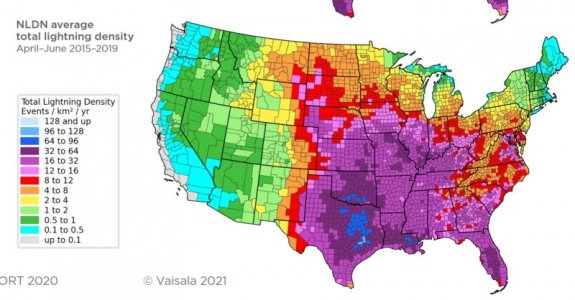
Expect we all have some fascinating lightning stories. I backpack into High Sierra wilderness that has lots of lightning during summer within certain weather patterns as Mexican Monsoon flows, especially with small hail, torrential rain, and sometimes snow at night. For those that have time to read the fascinating science:
Why lightning occurs:
Lightning detection - Wikipedia
Storm location: Even in daylight, "storm chasers" can use directional optical detectors that can be pointed at an individual cloud to distinguish thunderclouds at a distance. This is particularly important for identifying the strongest thunderstorms which produce tornadoes, since such storms produce higher flash rates with more high frequency radiation than weaker non-tornadic storms
Microburst prediction: IC flash detection also provides a method for predicting microbursts. The updraft in convective cells starts to become electrified when it reaches altitudes sufficiently cold so that mixed phase hydrometeors (water and ice particles) can exist in the same volume. Electrification occurs due to collisions between ice particles and water drops or water coated ice particles.
The lighter ice particles (snow) are charged positively and carried to the upper portion of the cloud leaving behind the negatively charged water drops in the central part of the cloud. These two charge centers create an electric field leading to lightning formation. The updraft continues until all the liquid water is converted to ice, which releases latent heat driving the updraft. When all the water is converted, the updraft collapses rapidly as does the lightning rate.
Thus the increase in lightning rate to a large value, mostly due to IC discharges, followed by a rapid dropoff in rate provides a characteristic signal of the collapse of the updraft which carries particles downward in a downburst. When the ice particles reach warmer temperatures near cloudbase they melt causing atmospheric cooling; likewise, the water drops evaporate, also causing cooling. This cooling increases air density which is the driving force for microbursts. The cool air in "gust fronts" often experienced near thunderstorms is caused by this mechanism.
Storm identification/tracking: Some thunderstorms, identified by IC detection and observation, make no CG flashes and would not be detected with a CG sensing system. IC flashes also are many times as frequent as CG so provide a more robust signal. The relative high density (number per unit area) of IC flashes allows convective cells to be identified when mapping lightning whereas CG lightning are too few and far between to identify cells which typically are about 5 km in diameter. In the late stages of a storm the CG flash activity subsides and the storm may appear to have ended—but generally there still is IC activity going on in the residue mid-altitude and higher cirrus anvil clouds, so the potential for CG lightning still exists.
-------------------------
Types of lightning:
Lightning Types
Does lightning go up or down? There are two ways that flashes can strike ground: naturally downward (those that occur because of normal electrification in the environment), and artificially initiated or triggered upward. Artificially initiated lightning is associated with things like very tall structures, rockets and towers. Triggered lightning starts at the “ground,” which in this case may mean the top of a tower, and travels upward into the cloud, while “natural” lightning starts in the cloud and travels to ground. Upward triggered lightning usually occurs in response to a natural lightning flash, but on rare occasions can be “self-triggered”—usually in winter storms with strong winds. Lightning can also be triggered by aircraft flying through strong electric fields. If the plane is below the cloud, then a CG flash could result.
In the most common type of cloud-to-ground lightning (CG), a channel of negative charge, called a stepped leader, will zigzag downward in roughly 50-yard segments in a forked pattern. This stepped leader is invisible to the human eye, and shoots to the ground in less time than it takes to blink. As it nears the ground, the negatively charged stepped leader causes streamer channels of positive charge to reach upward, normally from taller objects in the area, such as a tree, house, or telephone pole. When the oppositely-charged leader and streamer connect, a powerful electrical current begins flowing.
This return stroke current of bright luminosity travels about 60,000 miles per second back towards the cloud. A negative CG flash consists of one or perhaps as many as 20 return strokes. We see lightning flicker when the process rapidly repeats itself several times along the same path. The actual diameter of the lightning channel current is one to two inches, surrounded by a region of charged particles.
------------------
Lots more information, pictures, and maps at this below link that runs our hemisphere's major lightning detection equipment.
https://www.vaisala.com/sites/defau...-Annual-Lightning-Report-2020-B212260EN-A.pdf
More on our US lightning detectors:
Lightning Detection
Last edited:


